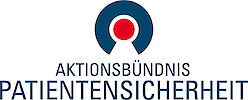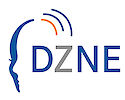Information about brachytherapy
What is brachytherapy?
Brachytherapy is a special form of radiation therapy. Brachy means short or close and refers to the short distance between the radiation source and the tumor. In contrast to conventional external radiation therapy, the radioactive radiation source is placed directly on the tumor or inserted into it. This enables the tumor area to be irradiated precisely and offers the best possible protection of the surrounding, healthy body tissue. Depending on the indication, brachytherapy can be used as a standalone radiation therapy or in combination with external radiation.
As with almost all forms of radiation therapy, brachytherapy uses gamma rays, which are produced by the natural decay of atomic nuclei. The radioactive radiation released in this process causes damage and even death of body cells. The extremely rapid growth of many tumor cells makes them more susceptible to radiation than the surrounding tissue.
However, normal body cells can also be damaged during treatment. Especially with external radiation, the rays pass through several layers of normal body tissue. Brachytherapy attempts to avoid this.
What brachytherapy methods are there?
There are two types of brachytherapy: interstitial and intraluminal brachytherapy.
Interstitial brachytherapy
In interstitial brachytherapy, the radioactive radiation sources are introduced directly into the organ in question. These radiation sources are also called seeds (like seeds that are planted in soil). They are used primarily for prostate cancer, where they remain permanently in the organ after introduction and thus act on the tumor tissue.
Intraluminal brachytherapy
In intraluminal brachytherapy, the radiation source is introduced via the applicator into the cavity surrounding the tumor (for example, the windpipe/esophagus). This is done for the respective treatment period (minutes) and is then removed again.
Afterloading
Due to the high side effects for the medical staff who were responsible for introducing the radiation sources, the afterloading technique was developed. All equipment is attached and then the radioactive emitters are introduced via the applicators using a computer-controlled delivery system.
For which types of cancer can brachytherapy be used?
Basically, due to the type of radiation application, the areas of the body that are accessible from the outside can be treated best. Therefore, the following types of cancer are mainly treated with brachytherapy radiation:
- Prostate cancer
- Cervical cancer
- Breast cancer
- Skin cancer
But cancers in other areas of the body can also be treated with brachytherapy radiation. These include:
- Collateral cancer
- Tumors of the esophagus
- Tumors of the trachea and bronchi
- Urinary tract tumors
- Head and neck tumors
- Brain tumors
- Eye tumors
Here, the radiation source can be introduced into the body through the respective body opening during therapy, so that direct contact with the tumor can be established. This reduces the radiation dose to be applied and shortens the duration of therapy. An additional advantage is that inpatient treatment is not mandatory. Due to the less frequent therapy sessions, outpatient brachytherapy is often also possible.
How does brachytherapy radiation work?
Like any type of radiation therapy, you start with planning the procedure. Certain information is required for this. Precise knowledge of the extent, type and location of the tumor is essential. Therefore, various diagnostic procedures must be used at the beginning. These include X-rays, computer tomography, magnetic resonance imaging and ultrasound.
With the help of the data obtained in radiology, modern data processing can be used to create three-dimensional images of the respective tumor with precise localization in the body. The optimal distribution of the radiation sources can then be planned in special programs and the radiation doses that hit the tumor and surrounding tissue can be calculated.
Due to the variability of the radiation positions, the best possible combination can be calculated in order to prevent so-called hot spots (areas with too high a radiation dose) and cold spots (areas with too low a radiation dose).
If this was successful, the next step can take place: inserting the applicators. The delivery system for the radioactive substance that is later introduced is called an applicator. Using the previously calculated image data, the exact position for the applicators in the body can be determined, where they are then fixed.
At the same time, the radiation therapist creates a treatment plan. This includes, among other things, how much radiation dose will be applied, for how long, and how many sessions will be necessary.
What are the advantages and side effects of brachytherapy?
Basically, the less the surrounding tissue and the more the tumor is irradiated, the better. This is the advantage that brachytherapy offers. Unfortunately, this option is not available for all types of cancer, as access via the mouth, anus, vagina or by resting on the skin is necessary for skin cancer. The focused radiation also reduces the risk of recurrence (risk of the tumor recurring).
Despite the precise irradiation of the tumor, radioactive rays always have side effects. During treatment, swelling, bleeding, discharge, difficulty urinating, diarrhea and skin peeling or irritation can occur. During this time, medication can help to alleviate these symptoms. Most side effects subside 4-8 weeks after therapy, when the body's cells have had time to regenerate.
In rare cases, permanent disorders of the digestive organs (diarrhea) or bladder can also occur. Likewise, radiation to the breast or skin can lead to scarring, which requires follow-up treatment.
No special precautions need to be taken with regard to the seeds. The range of the radiation is limited to the organ. Other people are therefore not exposed to an additional dose of radiation.
If the brachytherapy is successful, follow-up examinations are carried out at certain intervals. These serve to check the long-term success of the therapy and make it possible to detect a recurrence of the tumor as early as possible.
Brachytherapy cost coverage
The question of whether brachytherapy is generally covered by health insurance companies or whether the patient has to pay for it themselves cannot be answered clearly. It depends on which cancer is being treated with brachytherapy, whether the patient is taking part in a study and whether the treating doctors recommend brachytherapy. Two examples show the different ways in which health insurance companies handle cost coverage.
Cost coverage of brachytherapy for prostate cancer
Brachytherapy for prostate cancer is carried out using seed implantation or afterloading. Since the effectiveness of brachytherapy compared to other treatment methods has not been clearly proven by studies, cost coverage by the state or advance payment by the doctor should be clarified in advance.
















